

Film - model characters. We thought the new animated motion picture Coraline was made entirely via computer graphics, but apparently not.
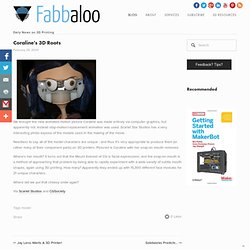
Instead stop-motion/replacement animation was used. Scarlet Star Studios has a very interesting photo expose of the models used in the making of the movie. Needless to say, all of the model characters are unique - and thus it's very appropriate to produce them (or rather many of their component parts) on 3D printers. Pictured is Coraline with her snap-on mouth removed. Where's her mouth? Where did we put that cheesy smile again? Via Scarlet Studios and CGSociety. The Birds! - Fabbaloo Blog - Fabbaloo.
SketchBot Comes to Life - Fabbaloo Blog - Fabbaloo. SketchBot is a character designed by Brooklyn, NY designer Steve Talkowski.
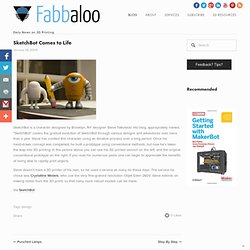
Hsi blog, appropriately named, "SketchBot" covers the gradual evolution of SketchBot through various designs and adventures over more than a year. Steve has created this character using an iterative process over a long period. Once his hand-drawn concept was completed, he built a prototype using conventional methods, but now he's taken the leap into 3D printing. In the picture above you can see his 3D printed version on the left, and the original conventional prototype on the right.
If you read his numerous posts one can begin to appreciate the benefits of being able to rapidly print objects. Steve doesn't have a 3D printer of his own, so he used a service as many do these days. Via SketchBot. More'a Coraline - Fabbaloo Blog - Fabbaloo. Last week we posted the inside details of how the popular movie Coraline was produced.
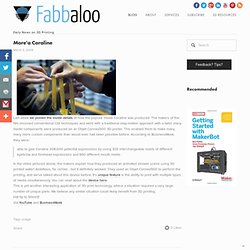
The makers of the film shunned conventional CGI techniques and went with a traditional stop-motion approach with a twist: many model components were produced on an Objet Connex500 3D printer. This enabled them to make many, many more custom components than would ever had been possible before. According to BusinessWeek, they were: able to give Coraline 208,000 potential expressions by using 320 interchangeable molds of different eyebrow and forehead expressions and 650 different mouth molds In the video pictured above, the makers explain how they produced an animated shower scene using 3D printed water!
This is yet another interesting application of 3D print technology, where a situation required a very large number of unique parts. Hat tip to Shimrit! Animated shower scene using 3D printed water. The process seems straightforward: Design a model with 3D Modeling softwareTweak the 3D model for printing suitabilitySend the 3D model to a 3D printerPlay cards while the printer buzzesEnjoy your printed modelThe fundamental element of this sequence is the 3D model itself, that digital artifact that represents the desired object.
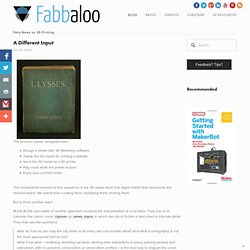
We spend time creating them, modifying them, sharing them. But is there another way? BLDG BLOG speculates of another approach involving the interpretation of a narrative. They ask us to consider the classic novel, Ulysses by James Joyce, in which the city of Dublin is described in intricate detail. They then ask the questions: After all, how do you map the city down to its every last conceivable detail?
And then: And: What if Ulysses had been written before the construction of Dublin? Finally: Whew! Definitely not today, or tomorrow. Via BLDG BLOG. Using 3D Microscopic Featres in Art. We're always amazed by the incredible ideas from imaginative designers, who are often inspired to create fantastic works by unusual sources.
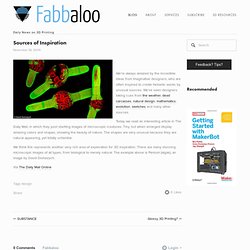
We've seen designers taking cues from the weather, dead carcasses, natural design, mathematics, evolution, sketches and many other sources. Today we read an interesting article in The Daily Mail, in which they post startling images of microscopic creatures. Tiny, but when enlarged display amazing colors and shapes, showing the beauty of nature. The shapes are very unusual because they are natural appearing, yet totally unfamiliar. We think this represents another very rich area of exploration for 3D inspiration. Via The Daily Mail Online. 3D printer used in Coraline animation.